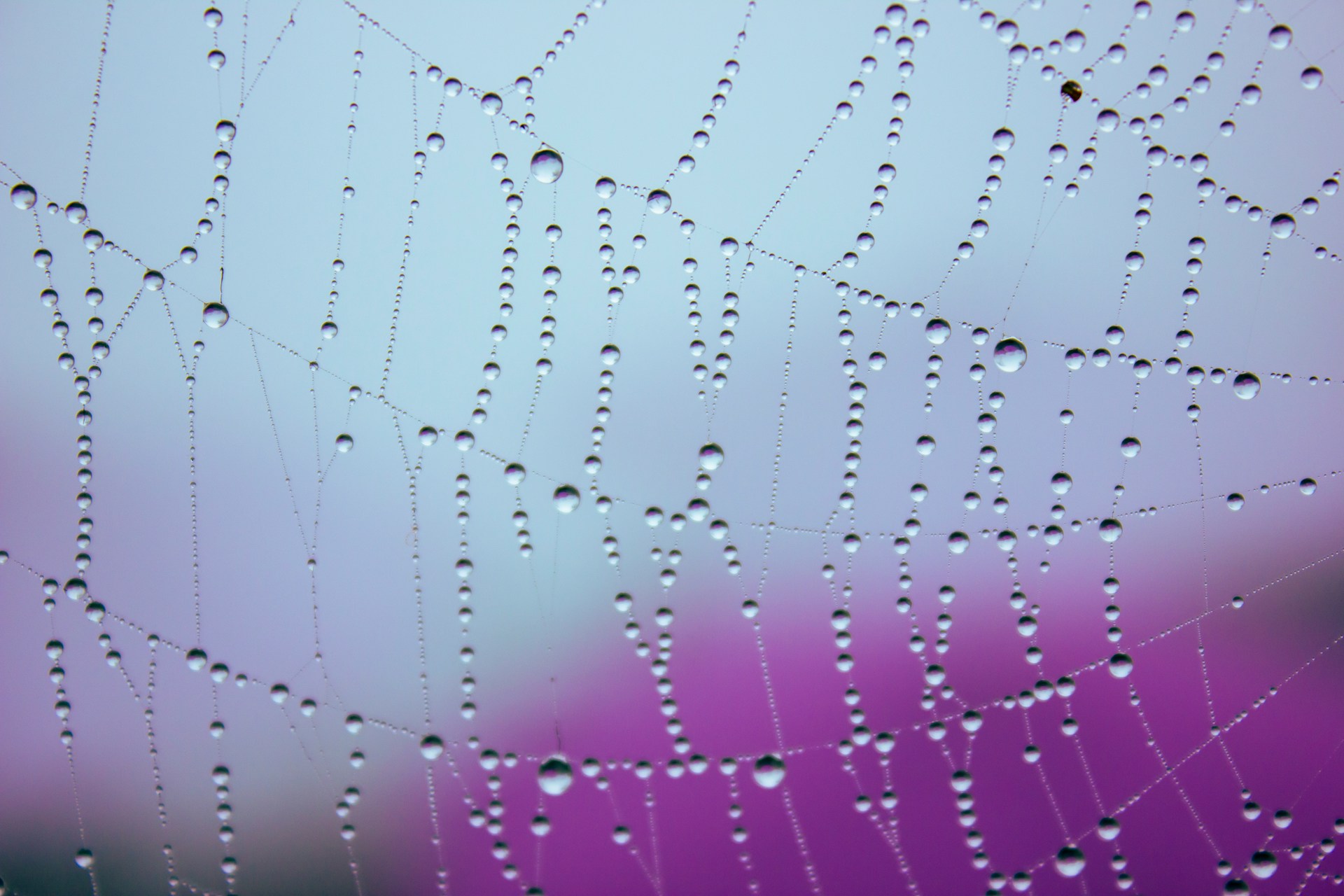Spider silk is one of the most amazing materials in nature. It has remarkable properties such as:
- Strength
- Toughness
- Flexibility
- Biocompatibility
However, harvesting spider silk from spiders is not feasible. Spiders are territorial and cannibalistic. Therefore, scientists have been trying to create artificial spider silk in the lab. They use various methods and materials to mimic the natural process that spiders use to spin their silk.
In this article, we will explore some of the recent developments and applications of artificial spider silk. We will also discuss how it can offer a sustainable alternative to conventional synthetic fibers.
How is artificial spider silk made?
There are different ways to produce artificial spider silk. However, they all aim to replicate the complex molecular structure and alignment of the silk proteins. These proteins, called spidroins, give the silk its unique mechanical properties.
Some of the methods that have been used to produce artificial spider silk include:
- Genetic engineering: This involves inserting spider silk genes into other organisms, such as bacteria, yeast, plants, or animals. These organisms produce spidroins, which are then extracted and spun into fibers. This method can produce large quantities of spidroins, but the quality and performance of the fibers may vary.
- Biomimetic spinning: This involves creating synthetic spidroins from non-biological materials, such as polymers. These spidroins are spun into fibers using devices that mimic the spider’s silk gland and duct. This method can produce fibers with high strength and elasticity, but the production cost and scale may be high.
- Recombinant proteins: This involves using synthetic biology to design and synthesize new proteins that have similar properties to spider silk, but are not identical to natural spidroins. These proteins can self-assemble into fibers with high strength and elasticity, but the design and synthesis process may be complex.
The table below summarizes the advantages and disadvantages of each method:
| Method | Advantages | Disadvantages |
|---|---|---|
| Genetic engineering | Large quantity, diverse sources | Variable quality, ethical issues |
| Biomimetic spinning | High strength, high elasticity | High cost, high energy |
| Recombinant proteins | Custom design, self-assembly | Complex synthesis, low yield |
Artificial spider silk and natural spider silk are both biopolymer fibers made from proteins called spidroins. However, they differ in the following aspects:
- Source: Artificial spider silk is produced in the lab, using various methods and materials, such as genetic engineering, biomimetic spinning, or recombinant proteins. Natural spider silk is produced by spiders, using their silk glands and ducts.
- Structure: Artificial spider silk tries to mimic the complex molecular structure and alignment of natural spider silk, which gives it its unique mechanical properties, such as strength, toughness, and elasticity. However, artificial spider silk may not be able to fully replicate the natural process and achieve the same quality and performance as natural spider silk.
- Quantity: Artificial spider silk can be produced in large quantities, depending on the method, the source, the quality, and the scale of the process. Natural spider silk is limited by the availability and behavior of spiders, which are territorial and cannibalistic.
- Cost: Artificial spider silk is still expensive to produce, compared to conventional synthetic fibers. The cost of artificial spider silk production ranges from $35,000 to $50,000 per kilogram of silk protein. Natural spider silk is also costly to harvest, as it requires a lot of time, labor, and resources.
What are the benefits of artificial spider silk?
Artificial spider silk has many advantages over conventional synthetic fibers, such as nylon, polyester, or kevlar. These fibers are widely used in various industries, but they have some drawbacks, such as:
- Environmental impact: Synthetic fibers are made from non-renewable and biodegradable materials, such as petroleum or coal. They require high temperatures and chemical solvents for production. They also generate greenhouse gas emissions and microplastic pollution.
- Biocompatibility: Synthetic fibers are not compatible with living tissues. They may cause adverse immune reactions or inflammation. They may also interfere with the natural healing process or degrade over time.
- Versatility: Synthetic fibers have limited functionality and customization. They may not be able to meet the specific needs and purposes of different applications.
Some of the benefits of artificial spider silk are:
- Sustainability: Artificial spider silk can be produced from renewable and biodegradable materials, such as water, silica, cellulose, or bacteria. It does not require high temperatures or chemical solvents for spinning. It reduces the environmental impact and energy consumption of textile production, which is one of the most polluting industries in the world.
- Biocompatibility: Artificial spider silk is compatible with living tissues. It does not cause adverse immune reactions or inflammation. It is ideal for medical applications, such as sutures, artificial ligaments, wound dressings, drug delivery, or tissue engineering.
- Versatility: Artificial spider silk can be modified and tailored to suit different needs and purposes. It can be made to have different colors, patterns, shapes, or functionalities, such as conductivity, fluorescence, or antimicrobial activity.
What are the applications of artificial spider silk?
Artificial spider silk has a wide range of potential applications in various fields and sectors, such as:
- Textiles: Artificial spider silk can be used to make fabrics and garments that are lightweight, durable, breathable, and comfortable. For example, Bolt Threads, a biotechnology company, has launched a line of clothing and accessories made from artificial spider silk, called Microsilk.
- Protective gear: Artificial spider silk can be used to make protective clothing and equipment that are strong, tough, and flexible, such as bulletproof vests, helmets, parachutes, or airbags.
- Cosmetics: Artificial spider silk can be used to make cosmetic products that are moisturizing, anti-aging, and biodegradable, such as creams, lotions, or masks. For example, Spiber, another biotechnology company, has partnered with The North Face to create a facial mask made from artificial spider silk, called Moon Parka.
- Art: Artificial spider silk can be used to create artistic and aesthetic objects and installations that showcase the beauty and diversity of nature. For example, Neri Oxman, a designer and professor at MIT, has created a series of sculptures and structures made from artificial spider silk, called Silk Pavilion.
What are the challenges and opportunities of artificial spider silk?
Artificial spider silk is a remarkable material that has many benefits and applications. However, it also faces some challenges and opportunities, such as:
- Cost: Artificial spider silk is still expensive to produce, compared to conventional synthetic fibers. The cost of artificial spider silk production depends on the method, the source, the quality, and the scale of the process. According to some estimates, the cost of artificial spider silk production ranges from $35,000 to $50,000 per kilogram of silk protein. To make artificial spider silk more affordable and accessible, the cost of production needs to be reduced to less than $10 per kilogram.
- Demand: Artificial spider silk has a high potential demand in various markets, such as textile, medical, cosmetic, and art. The global synthetic spider silk market size was valued at $1.09 billion in 2020 and is expected to reach $7.02 billion by 2030, registering a CAGR of 19.4% from 2021 to 2030. To meet the growing demand, the production capacity and efficiency of artificial spider silk need to be increased and improved.
- Innovation: Artificial spider silk is a material that can inspire and enable innovations and discoveries. By learning from nature and applying science and technology, artificial spider silk can offer solutions to some of the challenges and problems that we face in the 21st century. It can also create new possibilities and opportunities for the future.
Conclusion
Artificial spider silk is a material that is inspired by nature, but enhanced by science and technology. It is a sustainable and versatile material that can offer solutions to some of the challenges and problems that we face in the 21st century. It is a material that can change the world for the better.
Check out more articles!





